The Valley Campaign 1862
Introduction
This campaign was loosely based on Jackson in the Valley in 1862. I downsized the forces present in order to simplify game keeping as I was developing the system while playing the campaign
Historical Background
The strategic context for those who may not be familiar with the real campaign was that The Shenandoah Valley during the Civil War acted as strategic avenue for the Union forces to invade central Virginia, or indeed the Confederacy to invade the North. Also it was a major source of agricultural products for the Confederacy.
In 1861 Jackson was given command a small force to maintain control over the valley and prevent Union attacks. In 1862 during the Peninsular Campaign President Lincoln directed that the Union forces contest the Valley and wrest control from Jackson.
Meanwhile Jackson was always a Strategic Reserve for the Confederate troops fighting the Union in the Peninsular Campaign. Therefore he had to dominate the Valley, prevent Union interference and be prepared to leave the Valley and move to support the Confederacy.
Wargame Campaign Artificialities
- I down-sized the units a little
- The underlying table-top wargame rules would be Fire and Fury
- I provided both sides with “Spies” to provide strategic intelligence. Not unreasonable for the Confederates as it was their ground!
- Orders were issued mostly overnight to units, and at times for emergencies during the day!
The Campaign
Opening Moves
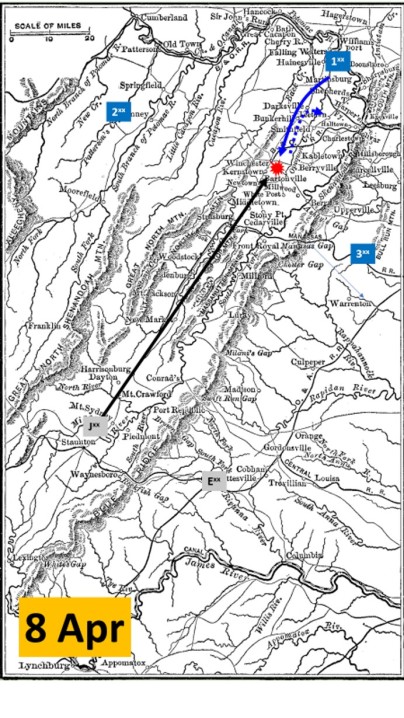
In early April Jackson received reports that the Union 1st Division was advancing down the Valley.
Given that 2nd and 3rd Divisions showed no indication of moving Jackson advanced up the Valley to strike a blow against the Union forces.
This lead to The Battle of Winchester 8 Apr 1862
The battle was a success for Jackson with the Union 1st Division was forced to withdraw. Jackson pursued for a couple of days and then retired to a more central position in the Valley.
The Union 2nd Division Threatens
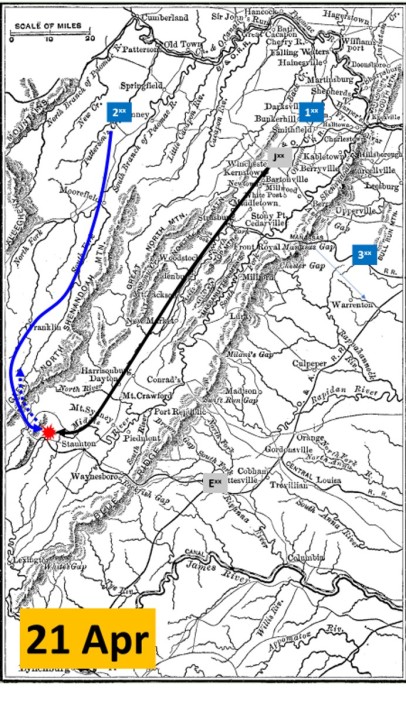
A few days after Jackson had returned to Front Royal he received reports that 2nd Division was on the move south. Early indications were that it was trying to cut off the end of the Valley to trap jackson
It was therefore imperative that this force be confronted and defeated. Jackson moved South. The Battle of Jennings Gap 21 Apr 1862
The outcome was a significant defeat for the 2nd Division. However, during the battle reports were received that both the Union 1st and 3rd Divisions were now moving south against Jackson. He had to break of contact and return North to confront this new threat.
1st and 3rd Division Join Forces
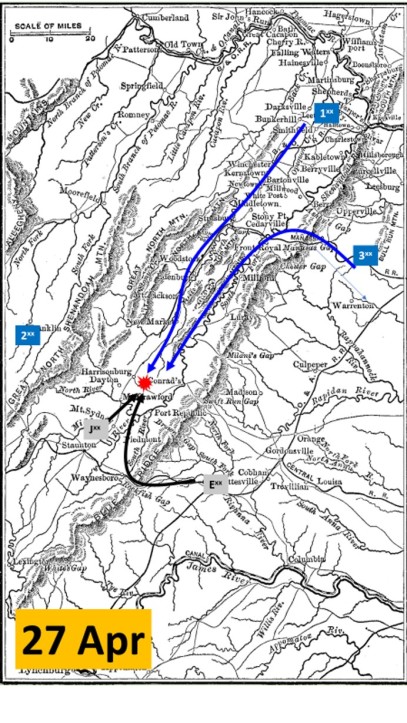
Given the change in force ratios Jackson requested and secured the release of Ewell’s Division to his command. He now felt sufficiently secure to engage the combined force.
At the The Battle of Massanetta Springs 27 Apr 1862 Jackson made himself ready to face the combined Union Forces. Ewell had not arrived but he and Ashby’s brigade were on route.
With Ewell’s support Jackson managed to secure a marginal victory, with the Union Forces withdrawing to regroup at the end of the battle.
The Union pursues Jackson
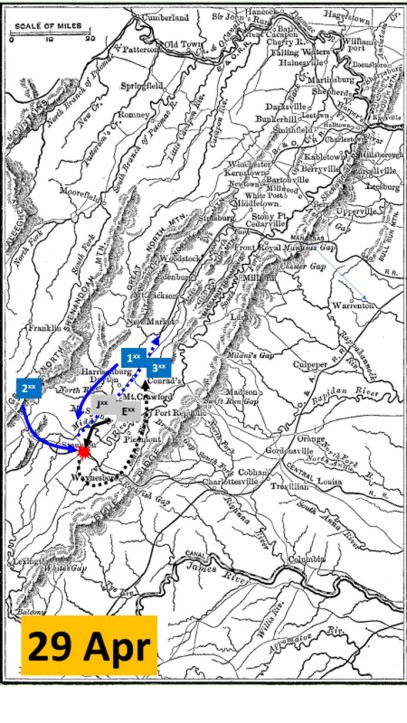
The day after The battle of Massenetta Springs Intel showed that the Union 2nd Division was making another attempt to close of the southern end of the Valley.
Jackson immediately turned South. This time the Union forces to the North followed up. Jackson detached brandon’s and Ashby’s Brigades to screen and delay the 3rd Division while he move with Ewell to defeat the 2nd Division. He hoped to out-pace the 1st Division.
At The Battle of Staunton 29 Apr 1862 the Confederate forces attacked and broke the Union 2nd Division and managed to break out past the 1st Division and head west
The Union withdrawal North and their decision to turn and fight
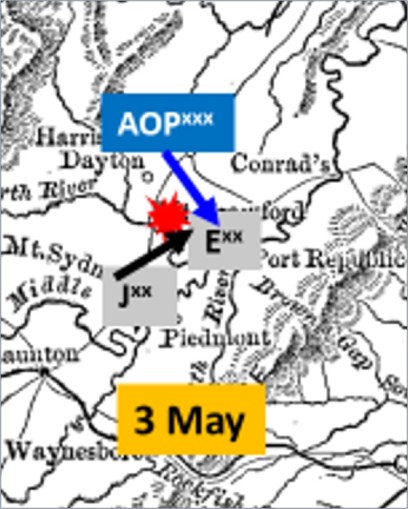
It was initially apparent that all the Union Forces were withdrawing North and now combined as the Army of the Potomac. This weak Corps continued to provide a threat and needed to be defeated. Jackson continued the pursuit.
On the 2nd May the Union forces had reached Harrisonburg. Ewell was in close contact, with Jackson a further match away. The Union Commander decided that with Ewell out of contact with Jackson would be an excellent opportunity to destroy the Rebel’s piecemeal.
The battle was fought on the 3rd May and led to a crushing defeat for the Union Forces. However, Jackson suffered grievous casualties, including the total destruction of Ashby’s Cavalry Brigade. Without their sacrifice it is doubtful if the victory could have been assured.





No comments:
Post a Comment